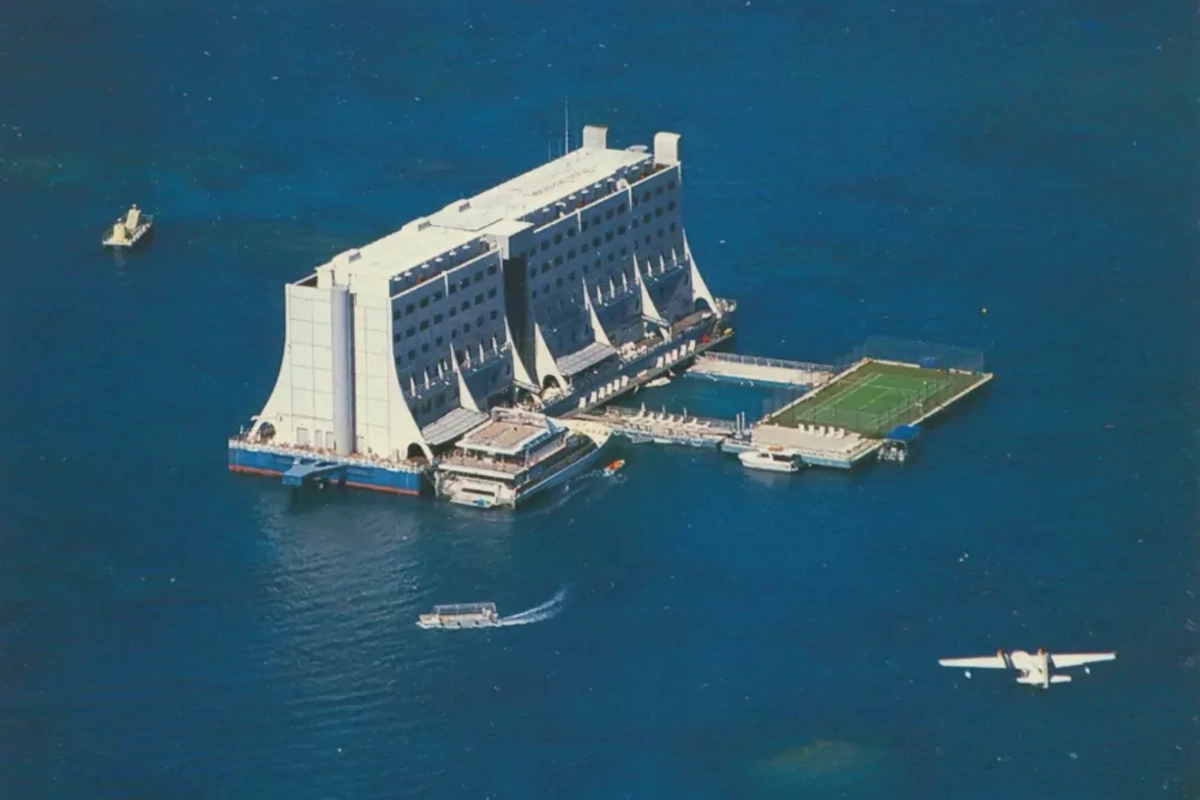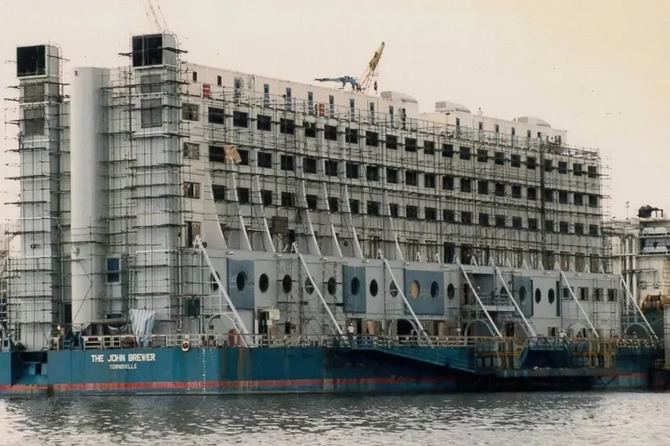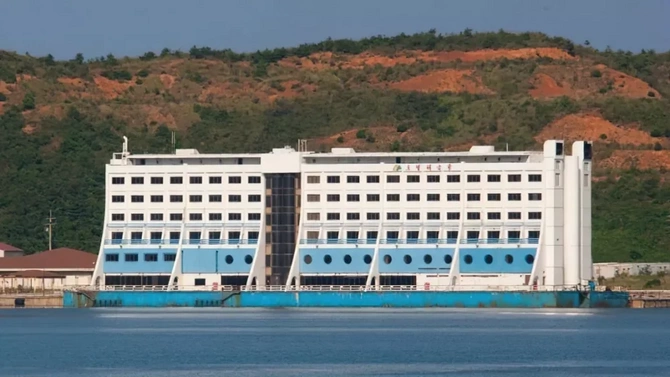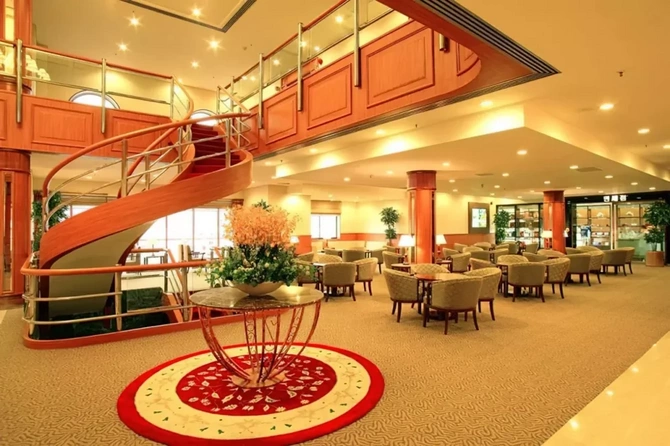Sunken Dream: The Story of the World's First Floating Hotel That No One Saved

Sunken Dream: The Tragic Odyssey of the World's First Floating Hotel
It all began like a fairy tale. The first and only fully floating hotel in the world - five stars, seven floors, luxury rooms, tennis court, swimming pool, helipad, diving center, and even a glass bathyscaphe. It was a true marvel of engineering thought from the late 80s, ahead of its time. But the fate of the Four Seasons Barrier Reef Resort turned out to be a sad story of unfulfilled dreams and missed opportunities. Built for luxury and enjoyment on the Great Barrier Reef, it journeyed from Australian waters to North Korea, where it turned into a rusty ruin, forgotten by everyone.

The idea was born in the mind of Doug Tarca - a professional diver and entrepreneur whose soul belonged to the sea. He adored the Great Barrier Reef off the northeastern coast of Australia and dreamed not just of taking tourists there, but of giving them the opportunity to live among the corals year-round. The climate allowed it, and the distance from shore - 50 to 200 kilometers - made the idea economically attractive. At first, Tarca wanted to repurpose old cruise ships, but then decided to create something unique.
In 1988, after two years of construction in Singapore shipyards, a floating beautiful hotel appeared in a horseshoe-shaped reef 80 kilometers from shore. Its price - 45 million dollars (about 100 million by today's standards) - was justified not only by luxury but also by innovation. Solar electricity, waste-free sewage system, seven anchors of unique design, an underwater section made of transparent acrylic, and a bathyscaphe for underwater excursions - it was the first autonomous eco-friendly hotel, anticipating global trends.
The luxury was stunning: 176 luxury rooms for 350 guests, a tennis court, a pool with transparent walls, a library, an underwater laboratory, two restaurants, shops, and a diving equipment rental point. Pay - and live in paradise.

But the dream quickly faced reality. The hotel could be reached by catamaran (a two-hour journey) or helicopter (for 350 dollars), but in bad weather both options became unavailable, cutting the hotel off from the world. The main problem turned out to be the rocking. Wealthy tourists expecting relaxation instead lay in their rooms suffering from seasickness. On the lower floors it was tolerable, but on levels 6-7 the rocking was unbearable. The seventh floor was occupied by staff, who were also unhappy with the conditions. Even advanced stabilizers couldn't save them from the sea waves.
The hotel stood empty, becoming a financial burden. The final blow came with a discovery: a few miles away, they found an ammunition dump from World War II. Guests vanished like the wind.

In 1989, the hotel embarked on a new journey - 5,500 kilometers to the mouth of the Saigon River in Vietnam. There it became a floating casino, losing its former buoyancy and underwater section (which was useless in the murky river). The court and pool were dismantled, but the establishment attracted visitors for 10 years. Over time, interest waned, and the owners again thought about selling. An unexpected buyer appeared in the form of North Korea.

The Kumgangsan Mountains - a jewel of North Korea with a mild climate and picturesque views - became the new home of the hotel. In 2000, after a warming of relations with South Korea, it was purchased by Hyundai for a resort where both nations were supposed to vacation. After traveling 4,500 kilometers, the hotel, under the name Haegumgang, operated for 8 years, hosting about 2 million guests. But in 2008, tragedy cut short its success: a North Korean soldier shot a South Korean tourist who accidentally went beyond the zone. After this, Hyun
Similar News
Named the berry that improves metabolism
Scientists from India have established that a rich set of bioactive compounds - flavonoids, alkaloids, stilbenes, anthocyanins, and polysaccharides in white mul...




 Azərbaycanca
Azərbaycanca  По-русски
По-русски  English
English 





